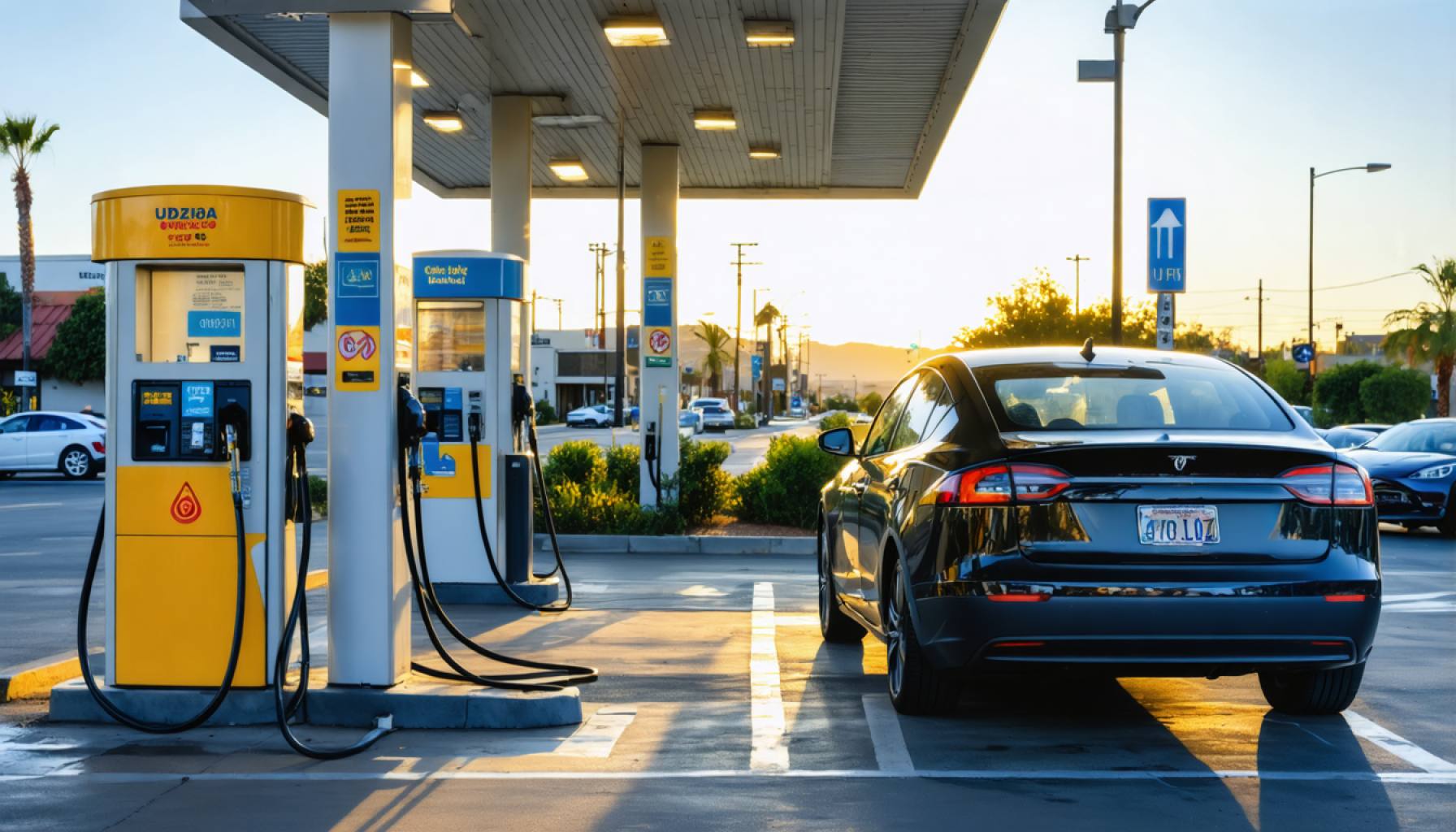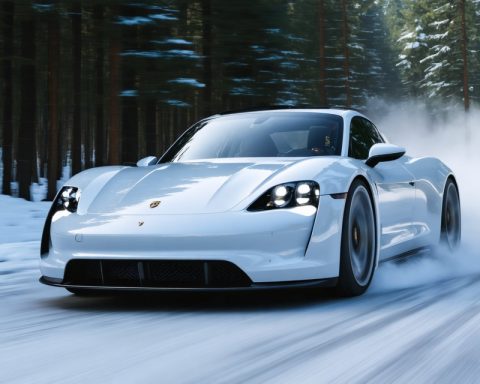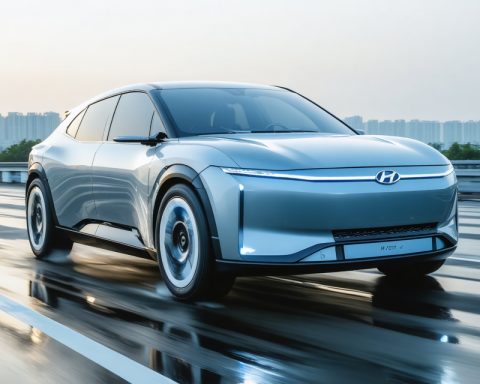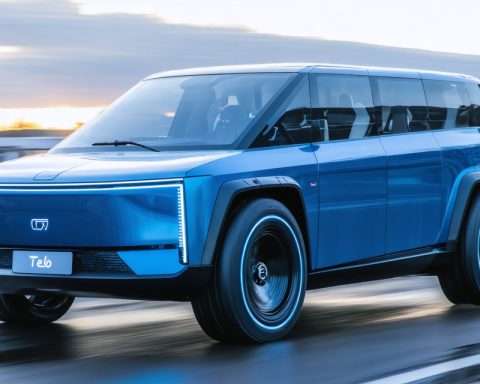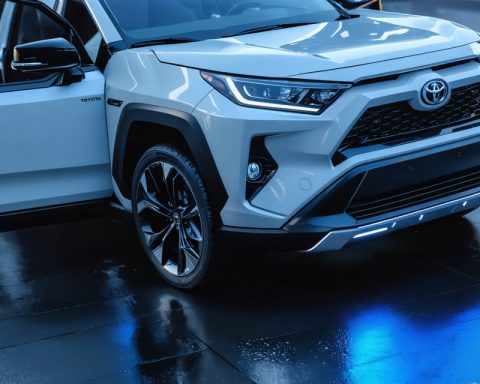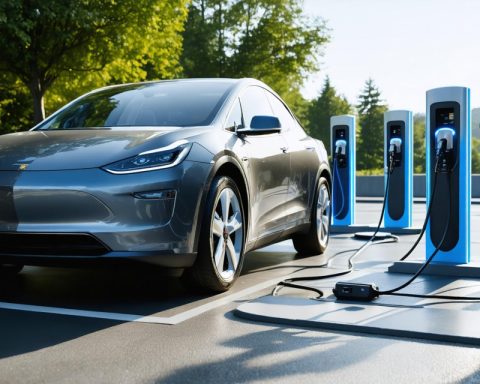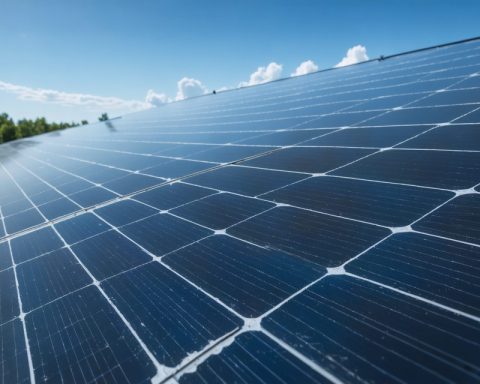- California has nearly 50% more electric vehicle (EV) chargers than gasoline nozzles, with 178,549 EV chargers compared to around 120,000 gasoline nozzles.
- Over 162,000 Level 2 chargers and nearly 17,000 fast chargers are available for public use, supplemented by more than 700,000 Level 2 home chargers.
- The state invests significantly in green infrastructure, including the Fast Charge California Project and a $55 million incentive plan for fast-charging stations.
- Governor Gavin Newsom emphasizes the expansion of charging infrastructure despite federal challenges, aiming for a zero-emission vehicle (ZEV) norm.
- 1 in 4 Californians now prefer ZEVs, with the state accounting for 30% of national new ZEV sales.
- The California government is actively planning the grid to accommodate the growing EV charger network.
- California showcases a cultural shift towards clean energy, promoting a sustainable future driven by innovation and environmental care.
Amidst the sprawling landscape of California, where highways are veins of bustling activity, a quiet revolution is unfolding. California, a state synonymous with innovation and environmental ambition, has achieved a groundbreaking feat in its pursuit of a cleaner future. In a striking juxtaposition of old versus new, California now boasts nearly 50% more public and shared private electric vehicle (EV) chargers than it has gasoline nozzles.
The California Energy Commission (CEC) has provided eye-opening statistics that highlight this trend: the state is home to 178,549 EV chargers while gasoline nozzles lag behind at approximately 120,000. Within this array of electric refueling points, over 162,000 Level 2 chargers cater to the patient while almost 17,000 fast chargers offer a quick zap of energy for those on the go. Adding to this picture are more than 700,000 Level 2 chargers nestled in single-family homes, turning garages into green energy hubs.
This surge in EV infrastructure is not a mere statistical anomaly but a deliberate step by California’s leaders. Governor Gavin Newsom has underscored their defiance against federal hurdles, assuring residents of their increased freedom in charging EVs across the state. By promoting this robust charging network, California envisions a transportation palette where zero-emission vehicles (ZEVs) become the norm, effectively painting a cleaner future.
The state’s endeavor is far from a solo mission. It reflects California’s persistent investment in its green goals, channeling billions into initiatives like the Fast Charge California Project. More than $1.4 billion is directed to expanding both electric charging and hydrogen refueling infrastructure. A $55 million incentive plan sweetens the deal, installing fast-charging stations in accessible locations.
This eco-friendly infrastructure pivots into a dramatic cultural shift among Californians, with 1 in 4 now favoring ZEVs over traditional gasoline cars. A staggering 30% of the nation’s new ZEV sales occur right here, mirroring the Golden State’s lead in the clean transportation crusade.
Governor Newsom and the California government aren’t resting on their laurels. Their proactive stance includes meticulous grid planning to accommodate this electric charger surge and efficient legislation to fast-track installations. The pathway is being paved not just with technical infrastructure but with a commitment to making California’s roads clean and its air breathable.
In this modern tale of David vs. Goliath, California stands resolute, substituting its legacy of gasoline for a cleaner electric horizon. The message is clear: a future driven by innovation, environmental care, and green energy awaits. As charging stations outnumber their gasoline counterparts, California’s message reverberates – the age of electric has truly dawned.
The Rise of Electric Vehicles in California: What You Need to Know
Introduction
Amid California’s scenic highways and bustling urban centers, a significant shift is ushering in a new era of transportation. With nearly 50% more electric vehicle (EV) chargers than gasoline pumps, the state is redefining its energy landscape. California’s pursuit of a zero-emissions future serves as a model for the nation, and this article delves deeper into the phenomenon, offering insights, trends, and actionable tips for consumers and industry stakeholders alike.
The Infrastructure Revolution
– State of EV Charging in California: Today, California hosts 178,549 EV chargers, far surpassing the approximately 120,000 gasoline nozzles. Among these chargers, over 162,000 are Level 2, ideal for long-term parking situations like overnight charging, while nearly 17,000 are fast chargers designed for quick refueling.
– Home Charging Insight: More than 700,000 Level 2 chargers are available in single-family homes, indicating a robust private charging network contributing to the EV ecosystem’s sustainability.
– Government Initiatives: The California Energy Commission and Governor Gavin Newsom have been pivotal in driving this transformation. Perhaps the most notable is the $1.4 billion investment in electric and hydrogen refueling infrastructure and the $55 million incentives to install fast-charging stations in accessible locations.
How California Leads the EV Market
– Pioneering EV Adoption: Californians have embraced the zero-emission vehicle (ZEV) trend, with 1 in 4 residents preferring ZEVs over conventional gasoline vehicles. The state accounts for 30% of the nation’s ZEV sales.
– Legislation and Grid Planning: California’s leadership continues to pass efficient legislation, focusing on expedited charger installations and improved grid planning to support increased EV usage.
Real-World Applications
– Environmental Impact: By increasing the number of EV chargers, California hopes to reduce its carbon footprint significantly, contributing to cleaner air and a healthier environment.
– Consumer Benefits: The expanding network of fast chargers makes long-distance travel with EVs more feasible, enhancing convenience and range confidence for users.
Market Forecasts and Industry Trends
– Growth Predictions: Analysts predict exponential growth in EV adoption, with California at the forefront. By 2035, California aims to transition entirely to ZEVs, further influencing national and global trends.
– Technological Innovations: Alongside infrastructure growth, advancements in battery technology, smart grid systems, and renewables integration will play crucial roles in enhancing EV utility and sustainability.
Limitations and Challenges
– Infrastructure Expansion: Efficiently expanding the charging infrastructure without overwhelming the electrical grid remains a primary challenge. Strategic planning and investment are necessary to ensure grid reliability.
– Public Awareness: Educating the public about the availability and benefits of EVs and charging options is critical to boost adoption rates.
Actionable Recommendations
1. For Consumers: Consider investing in a Level 2 home charger to complement public infrastructure and ensure convenience and cost-effectiveness.
2. For Policymakers: Continue to support incentives for EV purchase and charging station development to maintain momentum in EV adoption.
3. For Businesses: Invest in EV charging stations at business locations to attract eco-conscious consumers and employees.
Conclusion
California’s move towards an electric and sustainable future is more than just an environmental plan; it represents a cultural and social shift in how transportation is perceived and used. As gasoline nozzles become relics of the past, California leads the charge into a cleaner, brighter transportation future. For further information on California’s energy policies and initiatives, visit the California Energy Commission.
